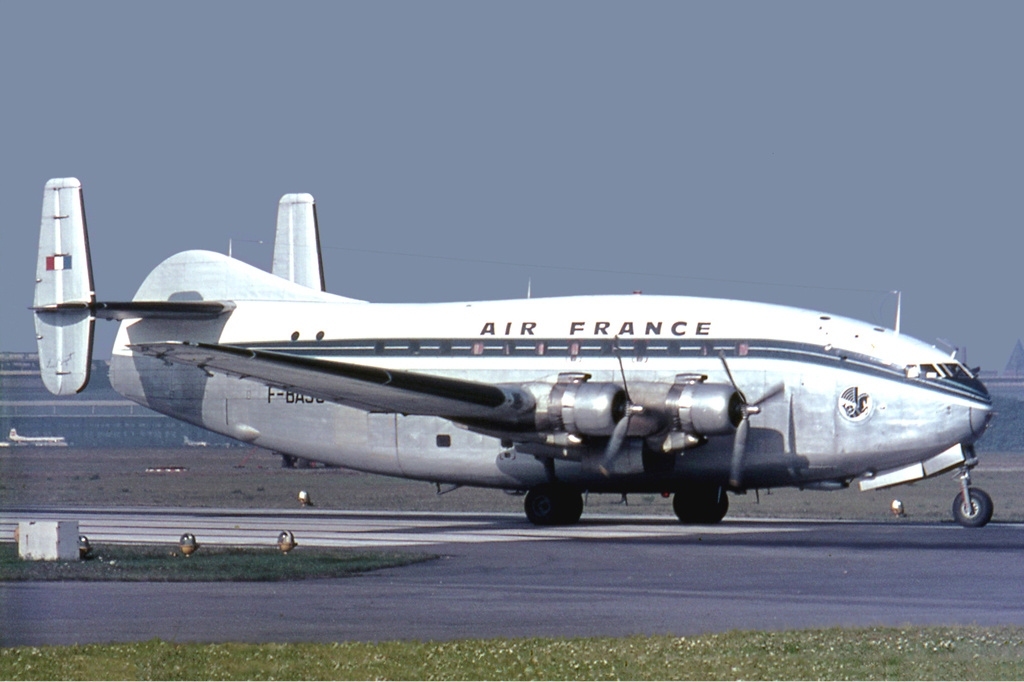The Airbus A380 stirred up plenty of excitement ahead of its introduction 13 years ago with the size of its build. However, the superjumbo had a predecessor that was also a European double-decker aircraft. The Bréguet Deux-Ponts series was being worked on from the 1940s and would go on to break ground in the aviation industry.

New requirements
Before the end of World War II, Bréguet designing the Bréguet 761 double-deck plane. The medium-range airliner was being worked on to provide the capacity for over 100 passengers. The project was initially known as the 76-1. Subsequently, the prototype Br.761, F-WASK, first flew at Villacoublay February 15th, 1949.
This edition 761 had a cantilever wing set at mid-height on the fuselage. Moreover, the retractable tricycle landing gear had dual-wheel main units in place. Four 1,580 hp (1,180 kW) SNECMA 14R-24 radial engines powered the prototype.
This initial aircraft was soon joined three Br.761S pre-production aircraft, which were supported by 2,020 hp (1506 kW) Pratt & Whitney R-2800-B31 radial engines. The planes successfully completed their trials with no issues and made their first journeys in 1951 and 1952.
Big in France
The French Government would eventually order 12 production aircraft of the Bréguet 763 aircraft. Six of the planes were to be flown with by Air France. Meanwhile, the remaining six were to be taken on by the Ministry of Transport.
The 763 had robust engines, along with a 1.20 metres (3 ft 11 in) larger wingspan and strengthened wings. It also had a three-crew flight deck while earlier aircraft had four crew. The plane confiscated its first flight on July 20th, 1951. It eventually was infroduced with Air France in the fall of the following year.
Altogether, the 763 could fit a maximum of 107 passengers. According to aeroTelegraph, 59 could fit ok the upper deck while 48 could fit on the lower deck. 135 passengers could have been seated with narrower seating. Notably, in the military transporter variant, the Deux-Ponts only had a row of windows on the upper deck.
The operations
Out of France, the national carrier used its six units mainly for destinations in the Mediterranean. For instance, it flew to Algiers, Algeria with the aircraft. Occasionally, the planes were also used on flights to London and on domestic routes from Paris.
However, in 1964, Air France handed over its Deux-Ponts to the French Air Force. In particular, the jet-powered Sud Aviation Caravelle made the propeller plane superfluous within Air France’s continental network.
What are your thoughts about the Bréguet Deux-Ponts series? Would you have liked to hit the skies with the aircraft if you had the chance? Let us know what you think of the planes in the comment section.
[ad_2]
Source link


